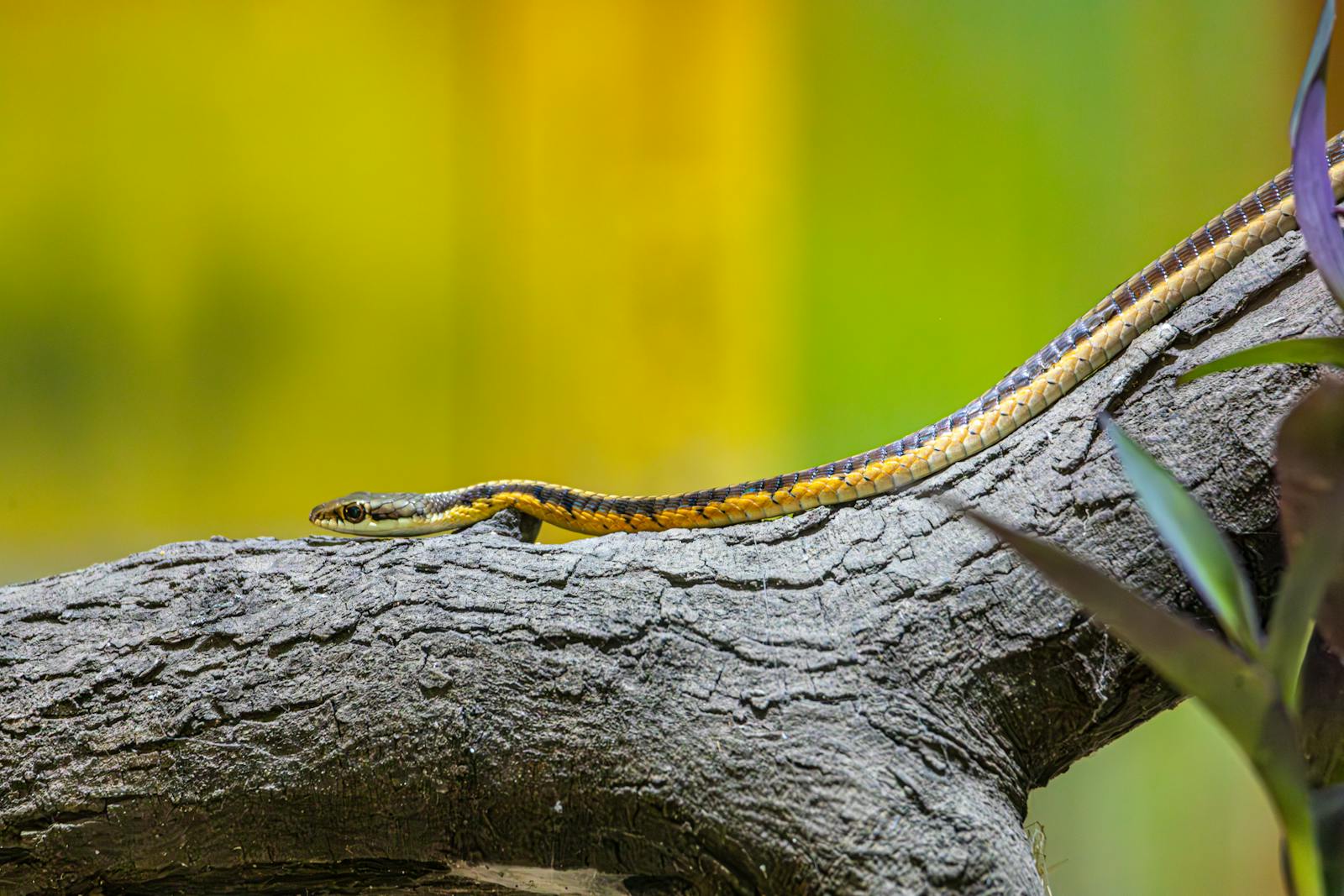The remarkable world of snakes never ceases to amaze with its diversity of adaptations and specialized behaviors. Among these fascinating reptiles, there exists a particularly extraordinary species that defies gravity with its unique climbing abilities. The Paradise Tree Snake (Chrysopelea paradisi) has developed the astonishing capacity to climb trees upside down, a feat that seems to contradict our understanding of physics. This agile arboreal acrobat not only masters inverted climbing but can also glide through the air, making it one of the most captivating creatures in the reptile kingdom. As we explore this snake’s remarkable abilities, physical characteristics, and ecological significance, we’ll uncover how evolutionary pressures have shaped one of nature’s most impressive climbers.
The Paradise Tree Snake: An Introduction to the Upside-Down Climber
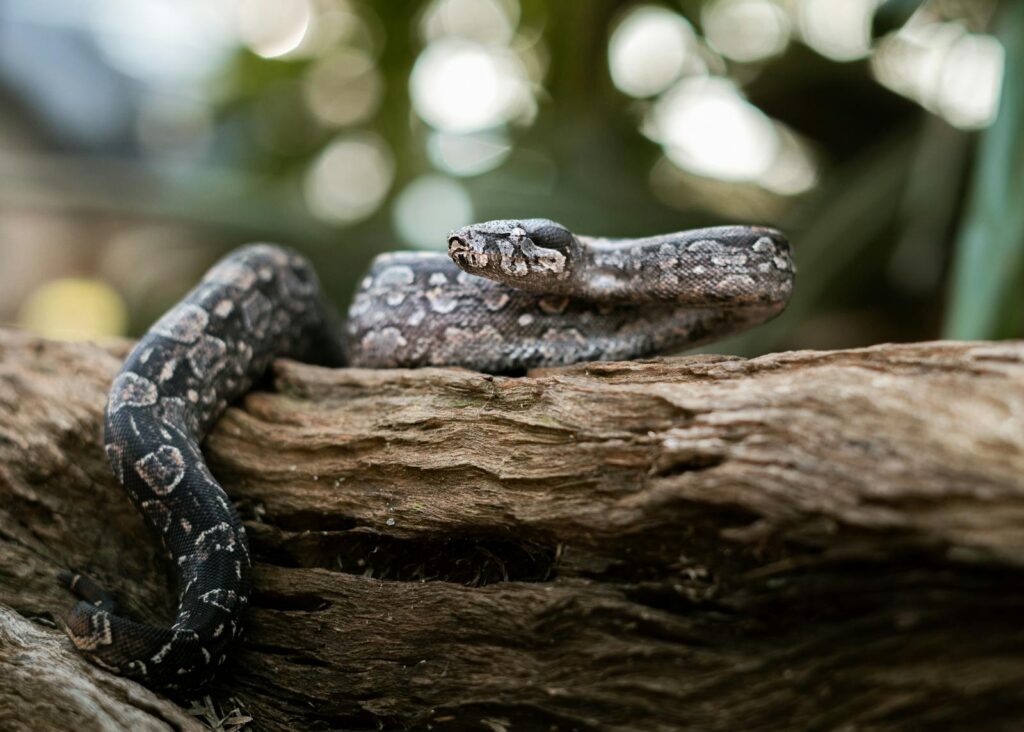
The Paradise Tree Snake (Chrysopelea paradisi), also known as the Paradise Flying Snake, is a non-venomous colubrid species native to Southeast Asia. Found primarily in countries including Thailand, Malaysia, Singapore, Indonesia, and the Philippines, these snakes have evolved specifically for life in the forest canopy. While many snake species can climb trees, the Paradise Tree Snake has refined this skill to an extraordinary degree, able to navigate branches and trunks from virtually any angle – including completely upside down. Their slender bodies, typically reaching lengths of 3 to 4 feet, are perfectly adapted for their arboreal lifestyle, featuring vibrant green, black, and yellow patterns that provide excellent camouflage among the leaves and branches of their forest home.
The Science Behind Upside-Down Climbing
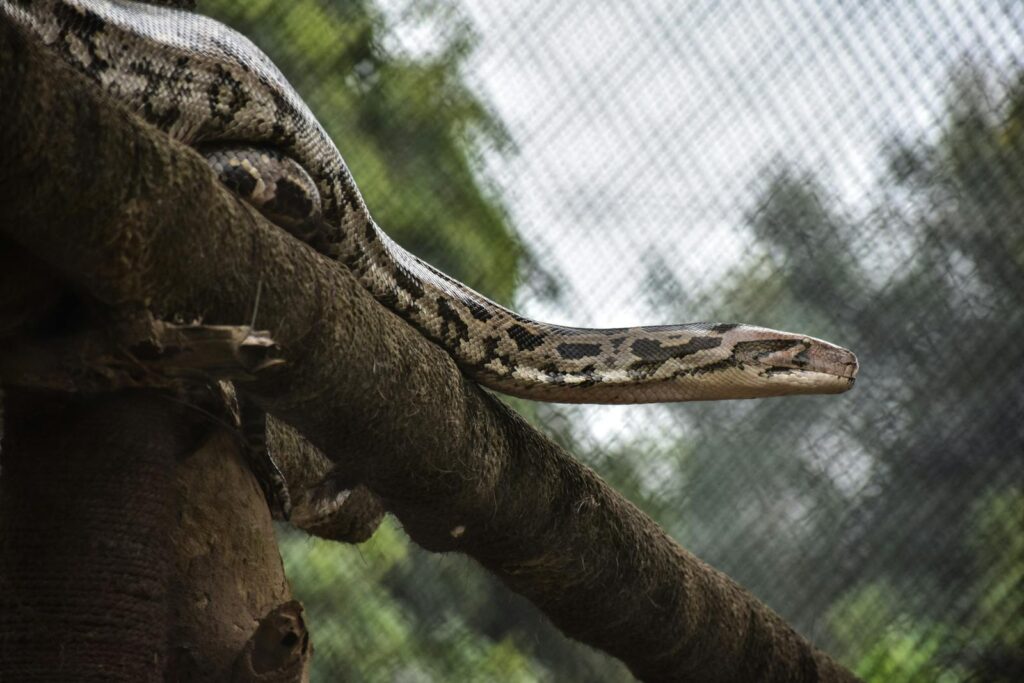
The Paradise Tree Snake’s ability to climb upside down stems from a remarkable combination of anatomical adaptations and biomechanical techniques. Their ventral scales (those on the belly) feature microscopic ridges and specialized structures that create significantly increased friction against surfaces. These specialized scales allow the snake to grip even smooth surfaces that would be impossible for other species to navigate. When climbing inverted, the snake creates a series of S-shaped curves along its body, distributing its weight across multiple contact points and utilizing subtle muscular contractions to maintain grip. Research conducted at the University of Cincinnati revealed that these snakes can manipulate the pressure and angle of their scales against surfaces with remarkable precision, effectively turning their entire undersides into a dynamic climbing apparatus capable of defying gravity.
From Climbing to Flying: The Paradise Snake’s Aerial Abilities
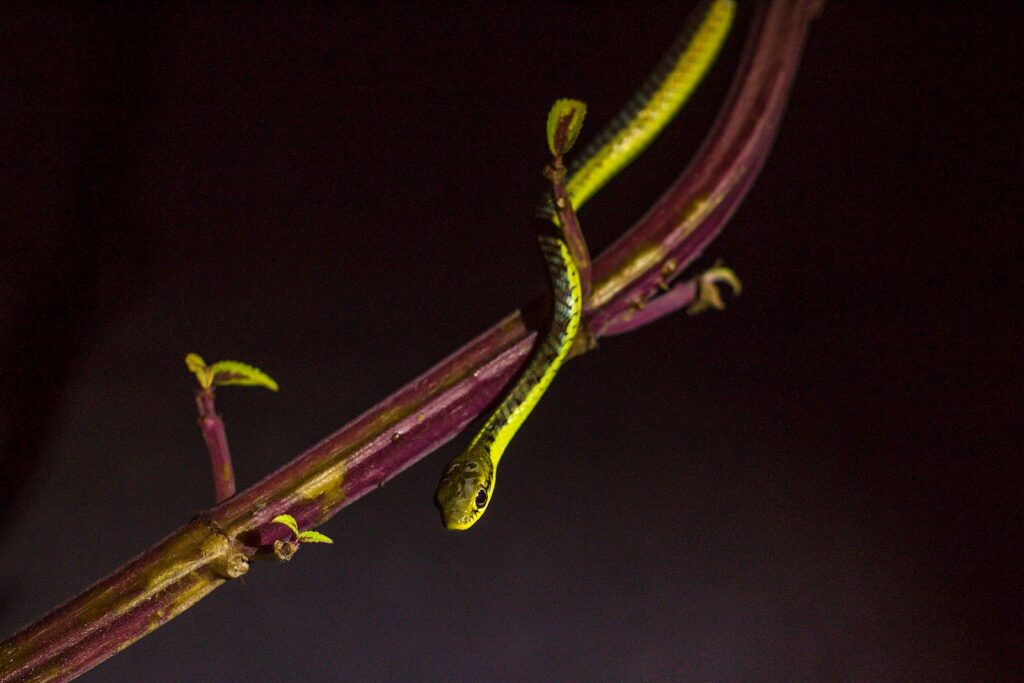
Perhaps even more astonishing than its upside-down climbing is the Paradise Tree Snake’s ability to glide through the air, earning it the alternative name “flying snake.” Despite having no limbs or wing-like structures, these remarkable reptiles can launch themselves from high branches and travel horizontal distances of up to 100 feet. Upon jumping, the snake flattens its ribcage dramatically, transforming its normally round body into a concave wing-like shape that generates lift. The snake further enhances its aerial control by performing undulating S-shaped movements in mid-air, which stabilizes its flight path and prevents spinning. This combination of morphological adaptation and active aerial control allows the snake to make controlled descents rather than simply falling, enabling efficient movement between trees without returning to the forest floor.
Physical Adaptations That Enable Extraordinary Climbing
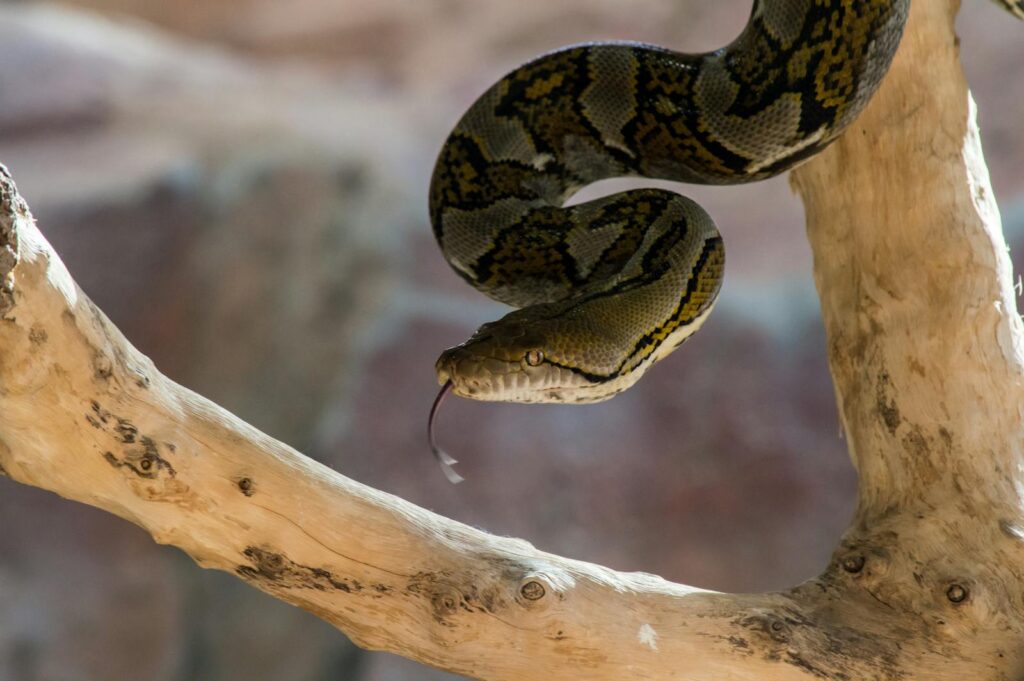
The Paradise Tree Snake possesses several key physical adaptations that facilitate its remarkable climbing abilities. Its body is exceptionally slender and lightweight, reducing the force needed to overcome gravity when moving upside down. The keeled scales along its body provide additional traction on a variety of surfaces, with microscopic structures creating friction similar to the setae found on gecko feet, though operating through different physical mechanisms. Their musculature is specialized for the precise movements required during inverted climbing, with particularly strong intercostal and ventral muscles that provide the necessary force to maintain body position against gravity. Additionally, their relatively low body weight compared to their length creates a favorable strength-to-weight ratio that makes climbing energetically efficient, allowing these snakes to spend extended periods navigating the three-dimensional environment of the forest canopy.
Habitat and Distribution of the Tree-Climbing Marvel
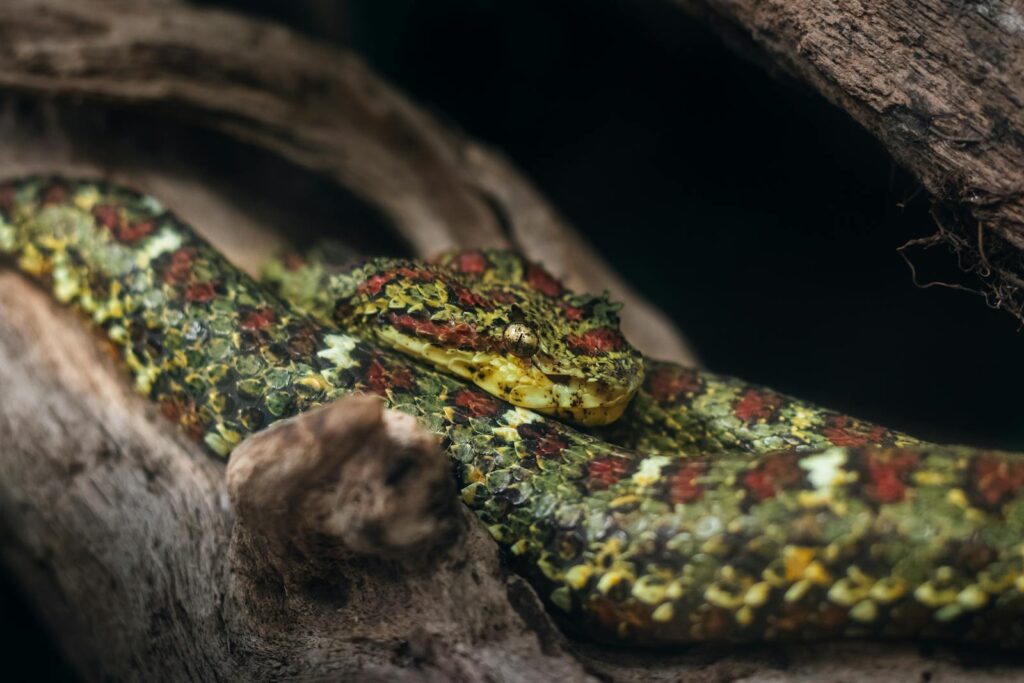
The Paradise Tree Snake thrives in the tropical forests of Southeast Asia, where the dense canopy provides both hunting grounds and protection from predators. These snakes have adapted specifically to life in primary and secondary forests, rubber plantations, and occasionally parks and gardens in more urban areas where sufficient tree coverage exists. Their range extends across Thailand, Malaysia, Singapore, Brunei, Indonesia (particularly Sumatra, Java, and Borneo), and parts of the Philippines, demonstrating their ability to adapt to various forest types within this tropical region. The species shows a distinct preference for humid environments with abundant rainfall, as these conditions support the diverse prey populations they depend upon. Research indicates that these snakes typically establish home ranges centered around areas with interconnected canopy, minimizing the need to descend to the ground where they would be more vulnerable to predation.
Hunting Techniques of an Arboreal Predator
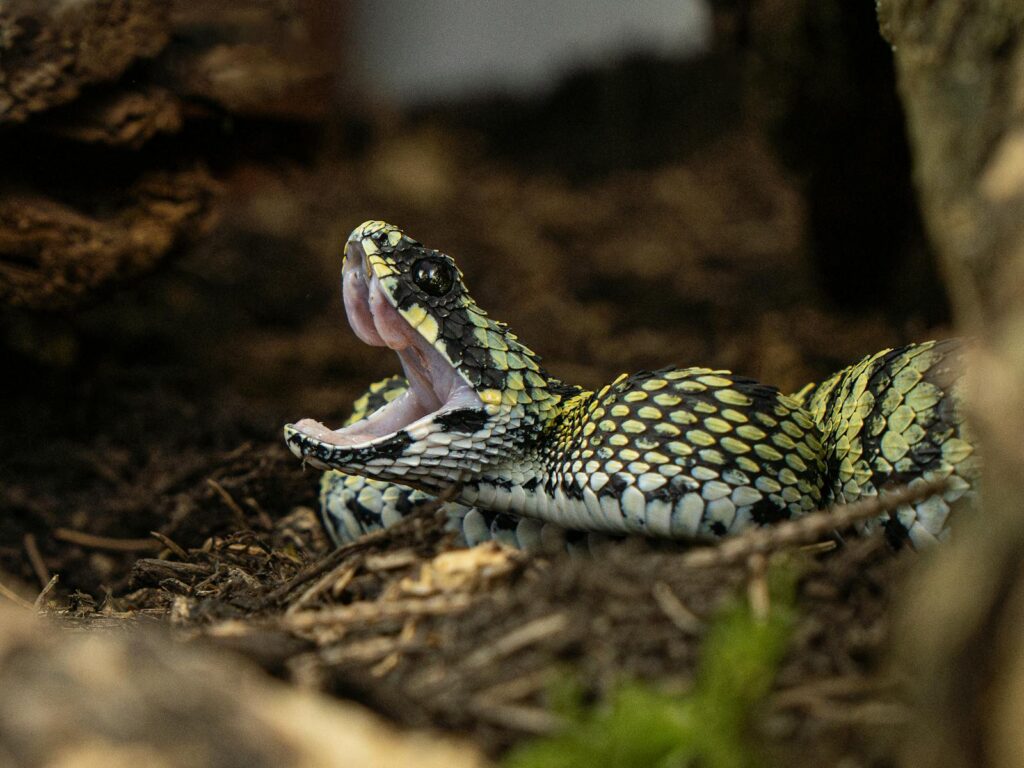
The Paradise Tree Snake’s exceptional climbing abilities directly translate into its hunting strategies as it pursues prey through the complex three-dimensional environment of the forest canopy. These snakes are active diurnal hunters, using their excellent vision to locate potential prey items such as lizards, geckos, frogs, birds, and occasionally bats. Their upside-down climbing capability allows them to approach prey from unexpected angles, often striking from below a branch where potential meals rest unsuspecting. When hunting, the snake will move deliberately and slowly until within striking distance, then execute a rapid lunge to capture prey with its sharp, backward-facing teeth. Although mildly venomous, their venom is not dangerous to humans but helps immobilize small prey while the snake’s powerful constriction completes the kill, allowing them to handle even relatively large and active prey in the precarious environment of the treetops.
Reproduction and Life Cycle Among the Branches
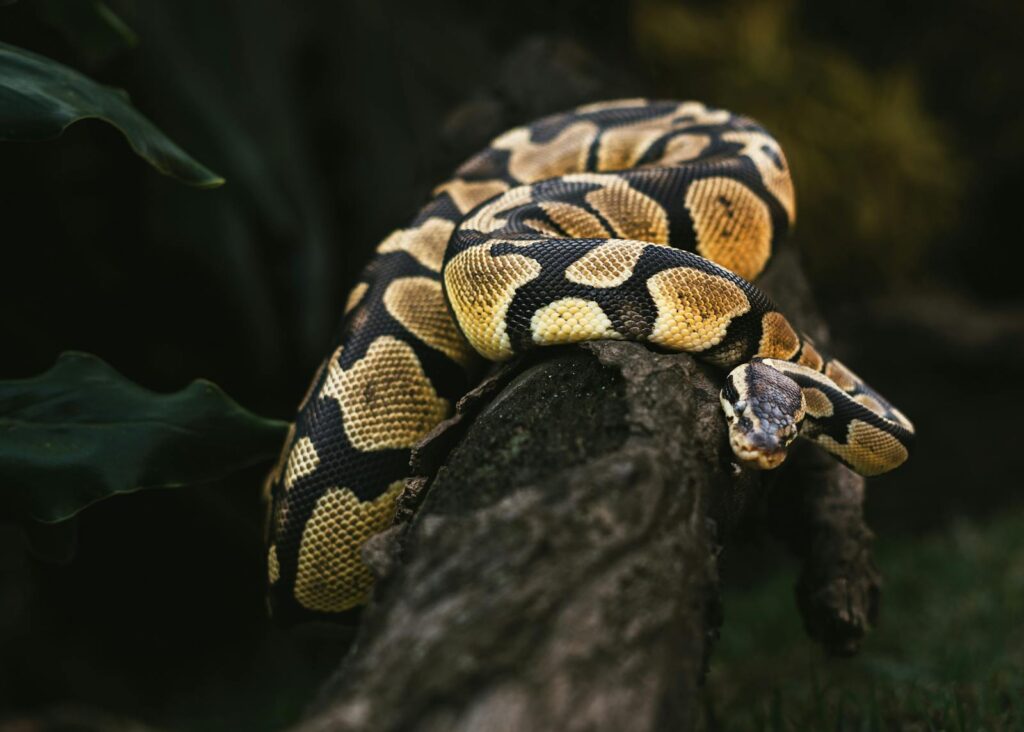
The reproductive biology of Paradise Tree Snakes is remarkably adapted to their arboreal lifestyle, with most mating activities occurring entirely in the trees. These snakes are oviparous, meaning females lay eggs rather than giving live birth, typically producing clutches of 6-12 eggs during the wet season when food resources are most abundant. Rather than constructing nests, females deposit their eggs in protected cavities within trees, rotting logs, or among dense clusters of epiphytes growing on branches, ensuring the eggs remain hidden from potential predators. The eggs incubate for approximately 8-10 weeks before hatching, with the precise duration dependent on ambient temperature and humidity conditions. Newly hatched snakes emerge as fully-formed miniature versions of adults, already equipped with the climbing abilities that define their species, though their gliding skills develop progressively as they grow and gain experience navigating the forest canopy.
The Evolutionary Advantage of Upside-Down Climbing
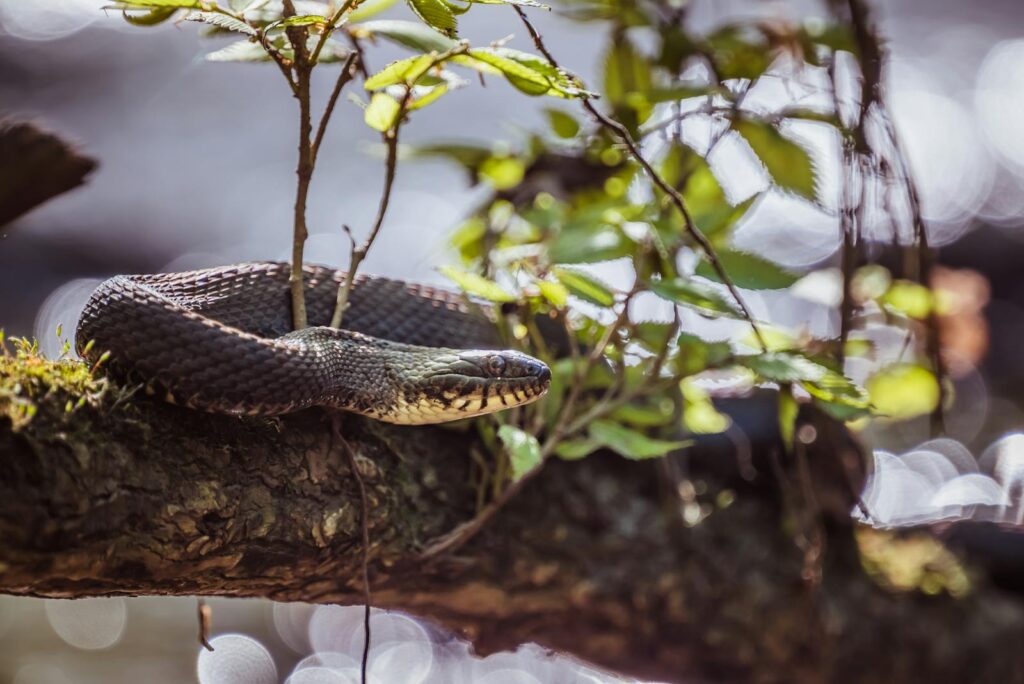
The Paradise Tree Snake’s unique ability to climb upside down represents a significant evolutionary advantage that has shaped its ecological niche. This specialized skill allows these snakes to access food resources unavailable to other predators, including those on the undersides of branches where many insects, lizards, and bird nests are located. The ability to move freely along all surfaces of branches and trunks also provides exceptional predator avoidance capabilities, as the snake can quickly retreat to the opposite side of a branch when threatened from above or below. Evolutionary biologists suggest this adaptation likely developed in response to intense competition and predation pressure in the biodiversity hotspots of Southeast Asian forests, where specialized abilities provide critical advantages. By exploiting a three-dimensional movement strategy more comprehensive than most other arboreal species, the Paradise Tree Snake effectively creates a unique ecological space with reduced competition and predation risk.
Conservation Status and Threats
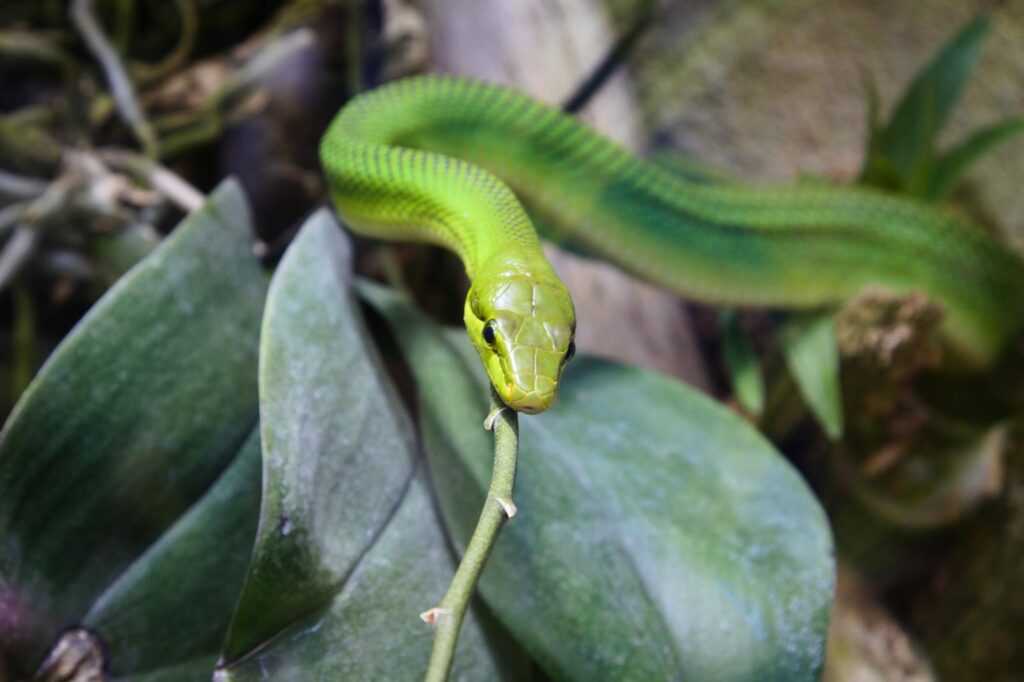
While the Paradise Tree Snake is not currently classified as endangered or threatened on the IUCN Red List, the species faces increasing pressure from habitat loss throughout its range. Deforestation for agriculture, particularly palm oil plantations, rubber cultivation, and urban development, has significantly reduced suitable habitat across Southeast Asia. These snakes are particularly vulnerable to habitat fragmentation, as gaps between forest patches limit their ability to disperse and maintain genetic diversity across populations. Additionally, Paradise Tree Snakes are sometimes collected for the exotic pet trade, though not at levels currently considered unsustainable. Climate change poses another potential threat, as alterations in rainfall patterns and temperature regimes may impact both the snakes directly and the prey populations they depend upon. Conservation efforts focused on preserving and connecting forest fragments could significantly benefit this species and the broader ecological communities it inhabits.
Scientific Studies and Discoveries
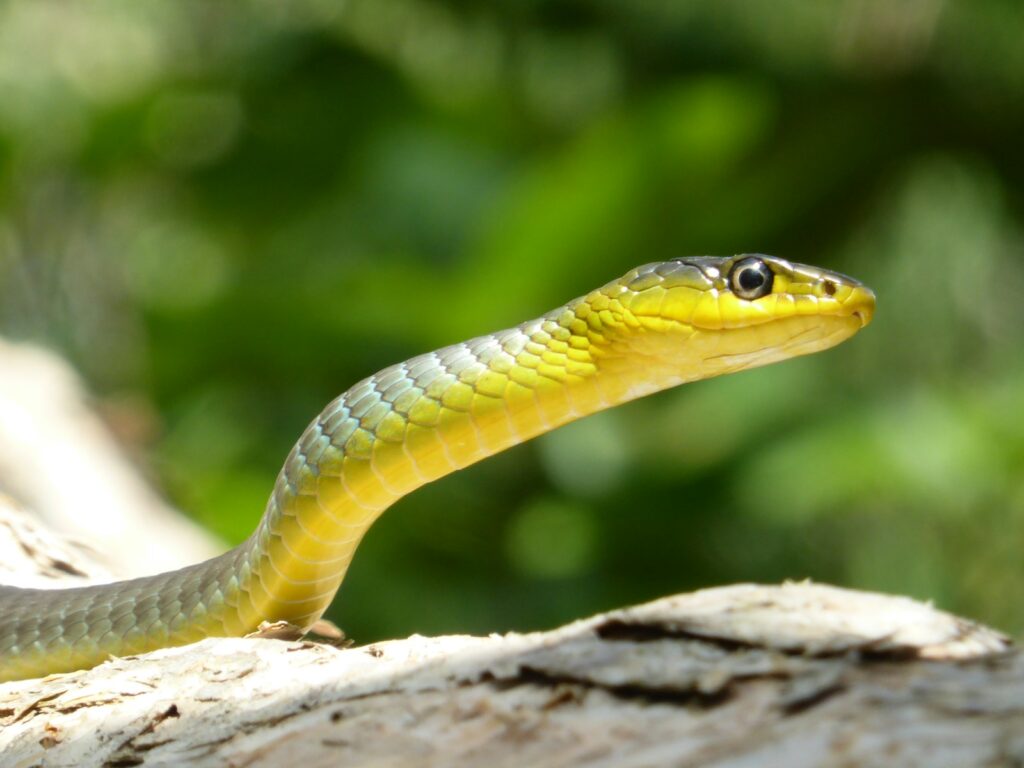
The remarkable abilities of the Paradise Tree Snake have attracted significant scientific attention, leading to groundbreaking research in biomechanics and functional morphology. Studies led by Dr. Jake Socha at Virginia Tech have used high-speed cameras and computational modeling to decode the precise mechanisms behind the snake’s gliding abilities, revealing how they generate lift despite lacking traditional wing structures. Research at the University of Cincinnati has examined the microscopic structure of their ventral scales, discovering ridge patterns that create directional friction ideal for climbing on various surfaces. More recent investigations have utilized CT scanning and 3D printing to model how the snake’s musculature works in coordination with its skeleton during inverted climbing. These studies not only advance our understanding of reptile locomotion but have implications for bioinspired robotics, with several research teams developing snake-like robots that can climb complex structures for applications in search and rescue, infrastructure inspection, and exploration of difficult-to-access environments.
Distinguishing the Paradise Tree Snake From Similar Species
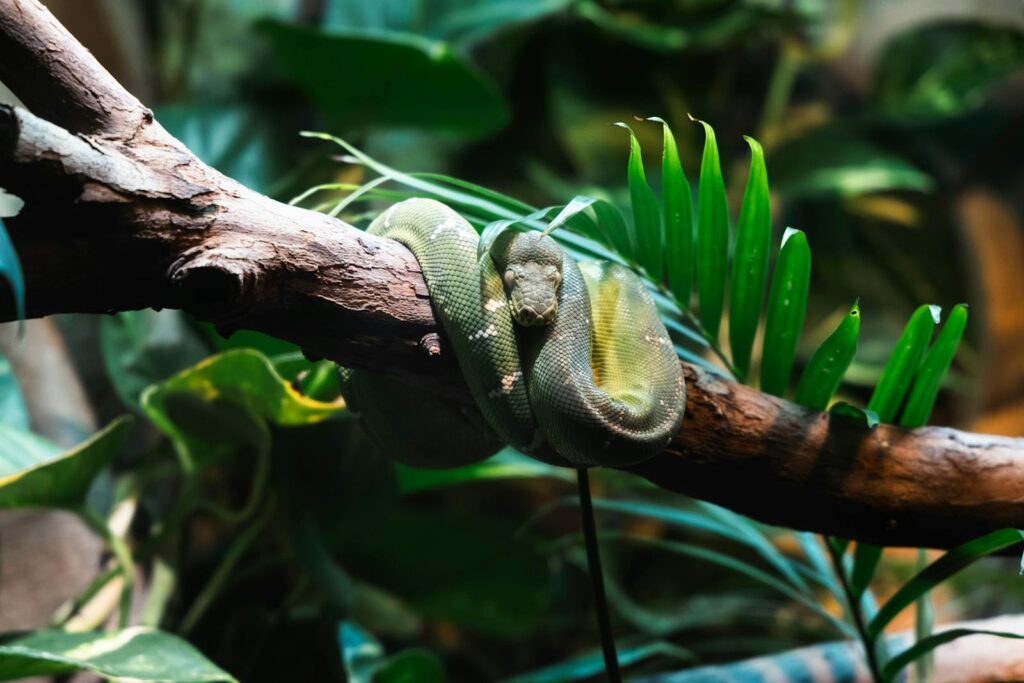
The genus Chrysopelea contains five recognized species of flying snakes, all capable of some degree of gliding and climbing, which can make identification challenging for the casual observer. The Paradise Tree Snake can be distinguished by its vibrant coloration featuring a black or dark green base adorned with yellow or green spots and crossbars, creating a distinct banded pattern along its length. In contrast, the Golden Tree Snake (Chrysopelea ornata) displays more prominent yellow markings and often appears more brightly colored overall. The Paradise Tree Snake also tends to have a more slender build than other Chrysopelea species and reaches a maximum length of about 4 feet, whereas some related species can grow somewhat larger. Behaviorally, the Paradise Tree Snake demonstrates the most developed climbing and gliding abilities within the genus, spending more time in the upper canopy and showing greater proficiency in inverted locomotion compared to its relatives, which may occasionally be observed descending to the forest floor.
Cultural Significance and Human Interactions
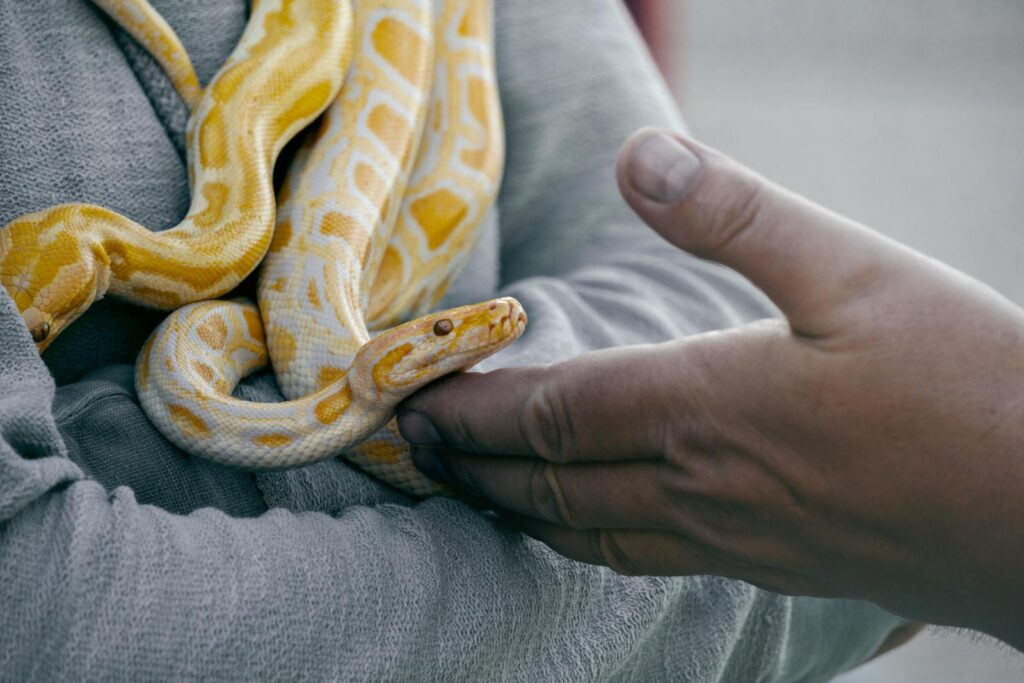
Throughout its range, the Paradise Tree Snake has figured in local folklore and cultural beliefs, often representing positive attributes like agility and freedom. In parts of Malaysia and Indonesia, traditional stories depict these snakes as guardians of the forest canopy, respected for their ability to move between the realms of earth and sky. Unlike many snake species that evoke fear, the Paradise Tree Snake’s non-venomous nature and spectacular abilities have generally earned it a position of admiration rather than dread in indigenous cultures. Modern interactions with humans largely occur when these snakes venture into plantations or gardens adjacent to forest areas, where they provide valuable ecosystem services by controlling populations of pest species. In Singapore, where urbanization has encroached on much of their natural habitat, education programs highlight these snakes as beneficial wildlife that pose no threat to humans, helping to foster coexistence as cities expand into formerly forested areas.
Captive Care and Ethical Considerations
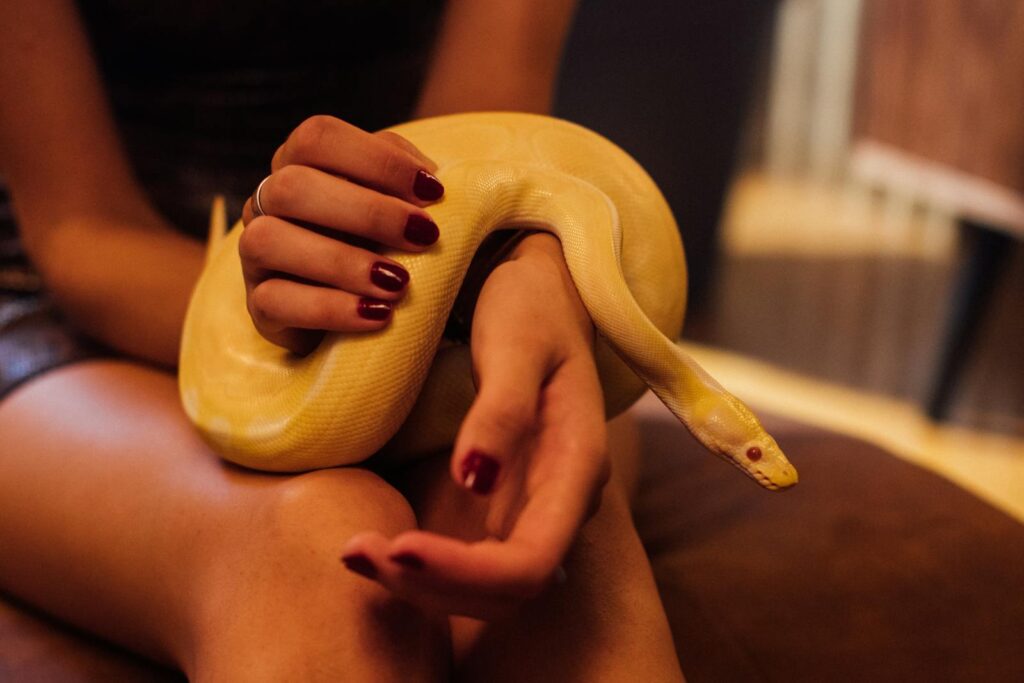
While Paradise Tree Snakes occasionally appear in the exotic pet trade, they present significant challenges for captive care that make them unsuitable for most private keepers. These highly specialized creatures require spacious, tall enclosures that replicate their arboreal lifestyle, with complex branching structures allowing for their unique climbing behaviors. Their diet in captivity must consist primarily of lizards and other small vertebrates, as many individuals refuse rodent prey, creating ethical and practical feeding challenges. The stress of captivity often leads to reduced feeding, health issues, and failure to display their natural behaviors, particularly their remarkable gliding abilities which cannot be expressed in captive settings. Conservation biologists and ethical herpetologists generally advocate against keeping these specialized snakes as pets, instead encouraging appreciation through field observation, documentation, and support of habitat conservation initiatives. For those interested in experiencing these remarkable creatures, visiting well-managed wildlife reserves within their native range offers opportunities for observation without contributing to the removal of individuals from wild populations.
The Paradise Tree Snake represents one of nature’s most elegant solutions to the challenges of arboreal living. Through specialized adaptations and behaviors refined over evolutionary time, these remarkable reptiles have mastered movement through three-dimensional space in ways that continue to astonish scientists and nature enthusiasts alike. Their ability to climb upside down and glide between trees showcases the incredible diversity of locomotion strategies that have evolved in the animal kingdom. As deforestation continues to threaten their native habitats, understanding and appreciating these unique creatures becomes increasingly important. The Paradise Tree Snake stands as a testament to the extraordinary adaptability of life and the countless wonders still waiting to be fully understood in the natural world.

